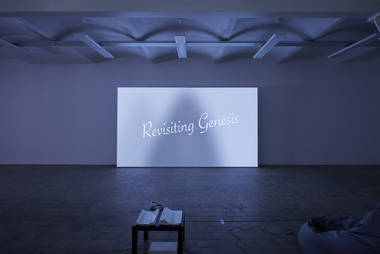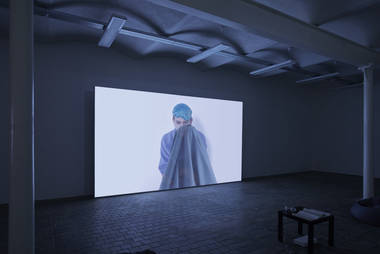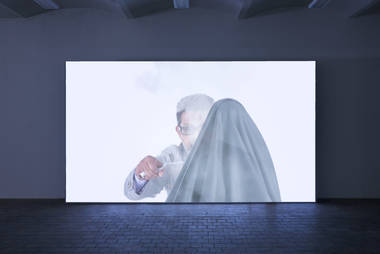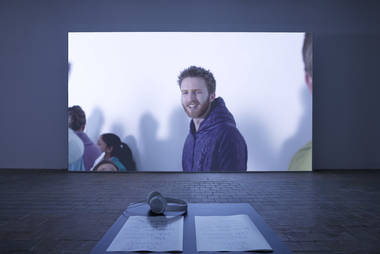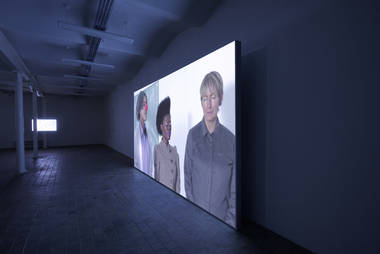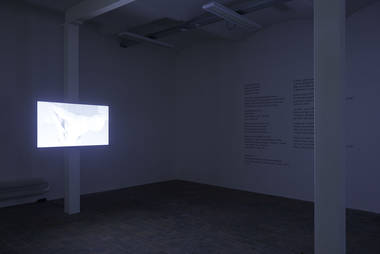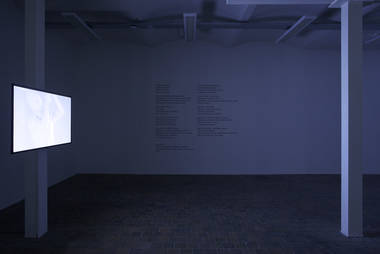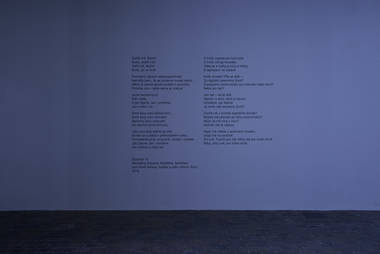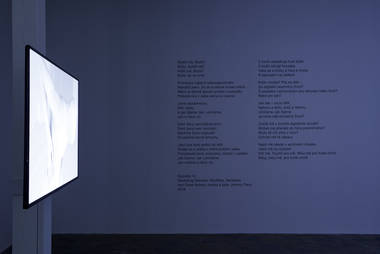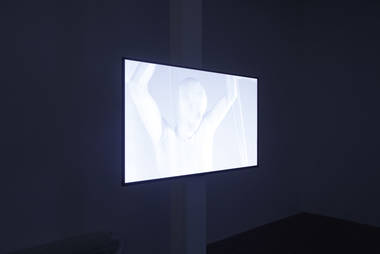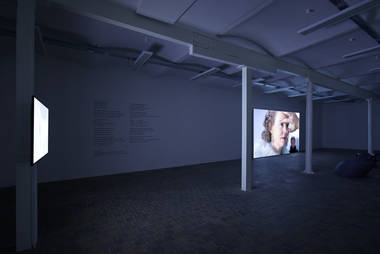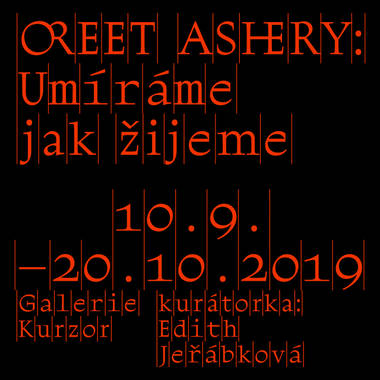Oreet Ashery: How We Die Is How We Live Only More So
September 10 – October 20, 2019
opening: September 9, 2019 from 6PM
curator: Edith Jeřábková
I remember vividly the first time I encountered the work of Oreet Ashery on the internet. I set her photograph of a gay man with pursed lips and a lollipop as my desktop wallpaper. Without yet knowing much about her work, I was thrilled by the way that Ashery managed to encompass in a single isolated shot featuring her trademark irony a gay theme, aesthetics and stereotypes, as well as the heterosexual gaze. It was only when I had wandered around London’s galleries and by chance found myself at her exhibition Animal with a Language at Waterside Contemporary that this photograph suddenly acquired another interpretation. I was interested in the maximum openness of her work, and this identification with her is taking shape only now as I prepare a series of exhibitions for the Cursor Gallery of artists whose work I simply like, and who, each from a different perspective, are putting a name to the neuralgic points of our current situation that are causing anxiety to spread in different intensities, localities and forms.
For some time now the art scene has been reflecting via an interdisciplinary practice upon the issue of health, above all physical and mental lifestyle diseases. This is perhaps also preparation for the introduction of a theme that to this very day remains taboo and about which many of us do not want or are afraid to speak. The last great cultural efflorescence to deal in a big way with death was the baroque, whose iconography of the Dance of Death combined both its social and private form in a symbolic language. And though we are surrounded by death in both the media and our realities, it is still difficult to talk about it. We have the feeling (rightly) that this is a very personal topic. And yet, as Oreet Ashery shows, it is highly political too.
Ashery gradually arrived at this theme via activist, engaged and participative projects, via work with immigrant communities, and via ideas linked with gender and cultural identity and anxiety, or “gender freedom fighting ” as she herself describes her performative projects with her alter ego, the orthodox Jew Marcus Fisher. This is what she has to say about her early sources of inspiration: “I was motivated by utter rage. I had rage about everything, and got involved in activism.” She moves towards the theme of death via artistic death. Here she is in another interview: “Emotionally I felt a move into political melancholia. Melancholia can be a kind of withdrawal. In Revisiting Genesis, there is a sense that partial withdrawal can be a response to artistic overproduction and the culture that drives us so hard. Artists can never stop. You always have to self-present. You are always ‘on’. If you are not, it is as though you are dead.”
Ashery combines the very personal with the public. This is true of the 12-part web video-series Revisiting Genesis. Drawing on her research into death in today’s virtual and digital era and into society on the threshold of a multi-crisis, she shows us artistic, digital and social death, online life after death, the emotional states of people diagnosed with a terminal illness, and the philosophical, religious, social and political conditions of death and dying. Dying is political, says Ashery: “The way we live is the way we die. The way poor people die. Black people, women, gay people. Dying alone, or not. It is all extremely political… We live in a reality that is increasingly fictional. Genesis is really my story. The death of my brother and of several artists I know all influenced it. The loss of social infrastructure and the welfare state are deaths, too.“
The central theme of the series is the changing perception of death brought about by new technologies and the flourishing online business with death, namely IT firms offering a posthumous online existence along with digital tombstones and keepsakes for the survivors. The main characters, two nurses called Jackie, are taken from the series Nurse Jackie and assist people with preparation of the autobiographical photo-documentation that will be their posthumous digital identity. The figure of Genesis based in part on the artist’s own life story. The alternation of fiction and fragments of real conversations that Ashery had with the medical staff during work breaks and with people diagnosed with a life limiting condition, and the knowledge she acquired through online consultations with experts in the spheres of medicine, death and dying, lend the theme an absurdity and humour that make it tolerable for acceptance and reflection.
This aesthetically narratival collage throws into the mix not only comedy and Judeo-Christian parables, but also pop-cultural phenomena and political realities. It also reflects the artist’s interest in narrative formats that are foregrounded in her other projects, such as the continual work No Nothing Salons in the Dark, a collaborative narration of the stories of a Syrian refugee and other people personally involved in their trauma and migration story, which was recorded in a darkroom in Thessaloniki, Greece.
The final episode of Revisiting Genesis suddenly represents a different form of narrative and the desire for a kind of new spirituality. However, it is also a hybrid of the airborne, gender-inflected, neutral corporeality of an aerialist and the Kaddish, the Jewish prayer for the deceased. Although this is a web series typical of the themes under examination, I am convinced that you will thoroughly enjoy its gallery presentation, for which it was also intended by the artist.
Edith Jeřábková
(transl. Phil Jones)
Oreet Ashery is a UK based interdisciplinary visual artist born in Jerusalem, whose personally and politically charged exhibitions, performances, videos and writings are highly regarded internationally. Ashery works on public, community, educational and participatory projects that are both politically and socially engaged, and is particularly interested in gender, bio-politics, fiction and community.
Revisiting Genesis, written and directed by the artist, was commissioned through the Stanley Picker Fellowships. The project premiered at Stanley Picker Gallery in Spring 2016 and led to Ashery winning the Jarman Award in 2017. The work is being presented at The Wellcome Trust in 2019-2020 as part of Jo Spence & Oreet Ashery: Misbehaving Bodies.
The exhibition programme of the Center for Contemporary Arts Prague receives support from the Ministry of Culture of the Czech Republic, Prague City Council, State Fund of Culture of the Czech Republic, City District Prague 7
Partners: Kostka stav
Media support: ArtMap, jlbjlt.net and UMA: You Make Art
Thanks: Darkovo.cz
